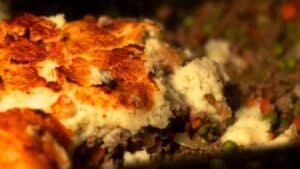Corn: A Comprehensive Guide
Corn is one of the most widely grown and consumed crops in the world. It is used for a variety of purposes, from feeding livestock to making ethanol fuel. In this guide, we will take a closer look at corn, exploring its history, nutritional value, and culinary uses.
What is Corn?
Corn, also known as maize, is a cereal grain that is native to the Americas. It is a tall annual plant that produces ears or cobs of kernels that can range in color from yellow to red to black. Corn is a versatile crop that is used in many different ways, including as a food source for humans and animals, as a sweetener in processed foods, and as a raw material for biofuels and other products.
History of Corn
Corn has a rich and fascinating history. It was first domesticated by indigenous peoples in what is now Mexico thousands of years ago, and it quickly spread throughout the Americas. Corn was an important staple crop for many ancient civilizations, including the Aztecs and the Incas. It was later introduced to Europe by Christopher Columbus, and it has since become a major crop in many parts of the world.
Nutritional Value of Corn
Corn is a nutritious grain that is rich in carbohydrates, fiber, and many essential vitamins and minerals. It is a good source of energy, and it can help to regulate blood sugar levels and promote digestive health. Corn is also rich in antioxidants, which can help to protect the body against harmful free radicals.
Culinary Uses of Corn
Corn is a versatile ingredient that can be used in many different dishes. It can be boiled, roasted, grilled, or fried, and it can be served in many different forms, including as whole kernels, creamed corn, and popcorn. Corn is a staple ingredient in many traditional dishes from around the world, including Mexican tamales, American cornbread, and Italian polenta.
How to Store Corn
Fresh corn should be stored in the refrigerator until ready to use, as it can spoil quickly at room temperature. It should be wrapped in a damp paper towel or plastic wrap to help retain its moisture. Cooked corn can be stored in an airtight container in the refrigerator for up to five days, or it can be frozen for longer-term storage.
Conclusion
Corn is a versatile and nutritious crop that has played an important role in human history for thousands of years. Whether you are using it as a food source, a sweetener, or a raw material for biofuels, corn is a valuable resource that has many practical uses. We hope this guide has helped you to better understand this important crop and its many culinary uses.







